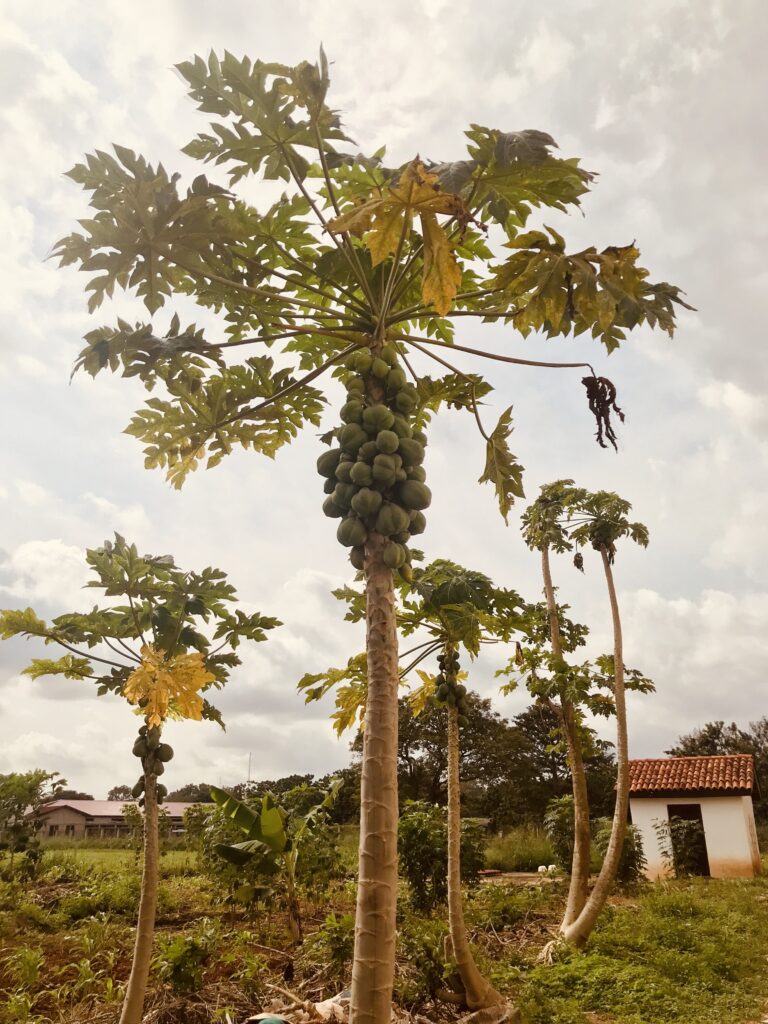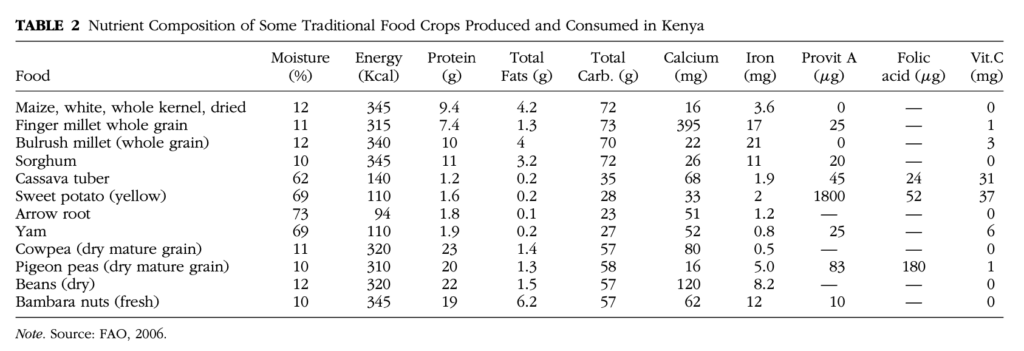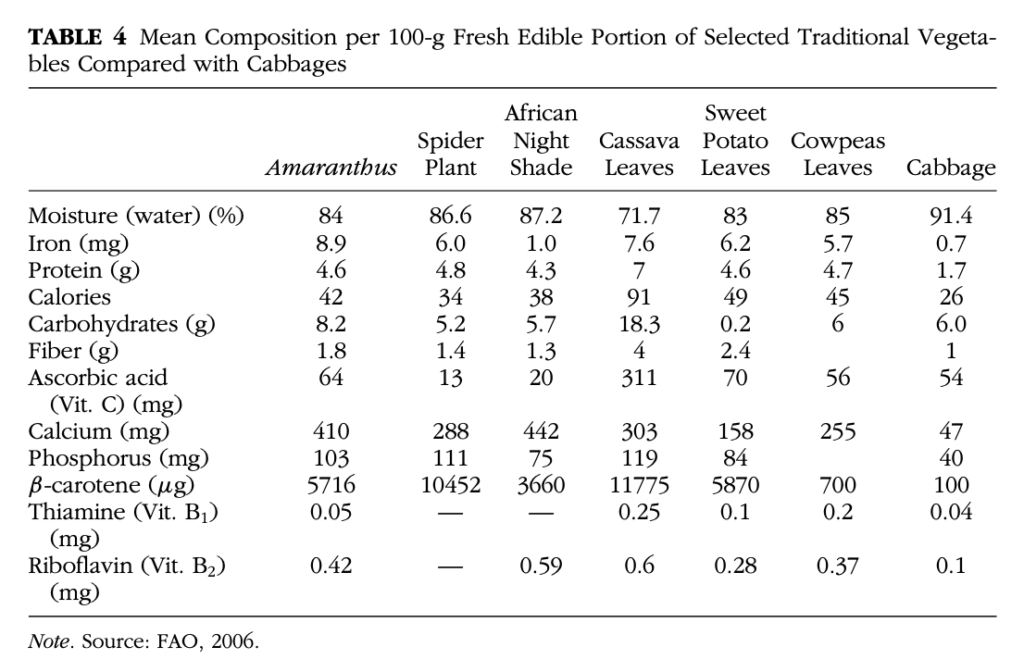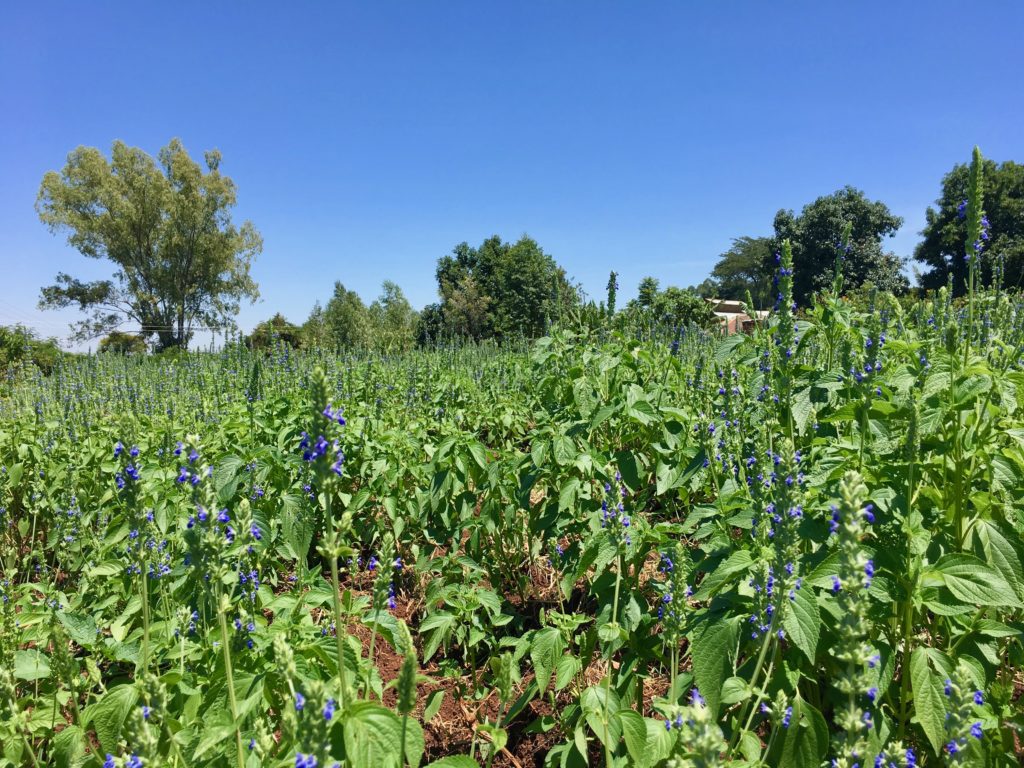
Traditional food crops remain to play an important role in ensuring nutrition/food security in Kenya – especially to those living in the rural areas. A variety of most traditional crops have a significantly higher nutritional profile and are easier to grow in arid (severe lack of available water) or semi-arid areas than any exotic, non-local crops that are not resistant to the harsh climate. By growing a diversity of local crop species, any climatic or biophysical (related to the crop’s evolution, development and survival) risks can be managed better, thus limiting the chance of total crop failure. Therefore, it’s essential that production and consumption of diverse nutrient rich local crops gets promoted in the food scarce areas of Kenya.
Maize remains to be the number one staple food crop in Kenya (with rice, wheat, and beans being consumed on a lower scale), however the production is threatened by the increasing water insecurity brought by global climate change. Meanwhile, production of traditional food crops, that do well in dry environments, has generally decreased over the years. In order to change this pattern, Momentum Trust must supply the farmers with sufficient planting materials as well as examine the change in eating habits in the rural areas of Kenya, in order to find a way to implement a larger variety of local food crops here. To achieve national food security and sufficiency through a better food production the focus must be on growing nutritional, resistant food crops like sorghum, millet, sweet potatoes, cowpeas, pigeon peas, amaranth, spider plants, and chia.



Amaranth and spider plants are among the most common, traditional leafy vegetables in Kenya. During the early independence times, the eating habits modernized and brought a decrease in production and consumption of traditional, leafy vegetables. This led to an increase in micronutrient malnutrition, especially in the poorer part of the population that didn’t have the money to pay for animal products. In recent years the Kenyan government has tried to re-introduce these food crops in Kenya again through campaigns, which has led to an increased consumption in Nairobi and other urban areas. Now the change must be taken to the rural areas of Kenya as well.
